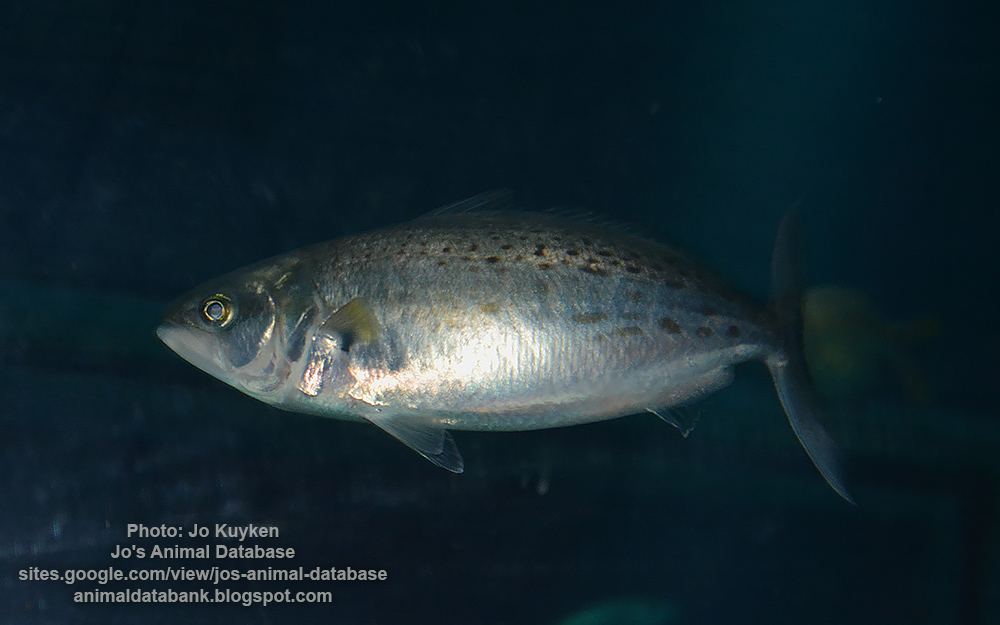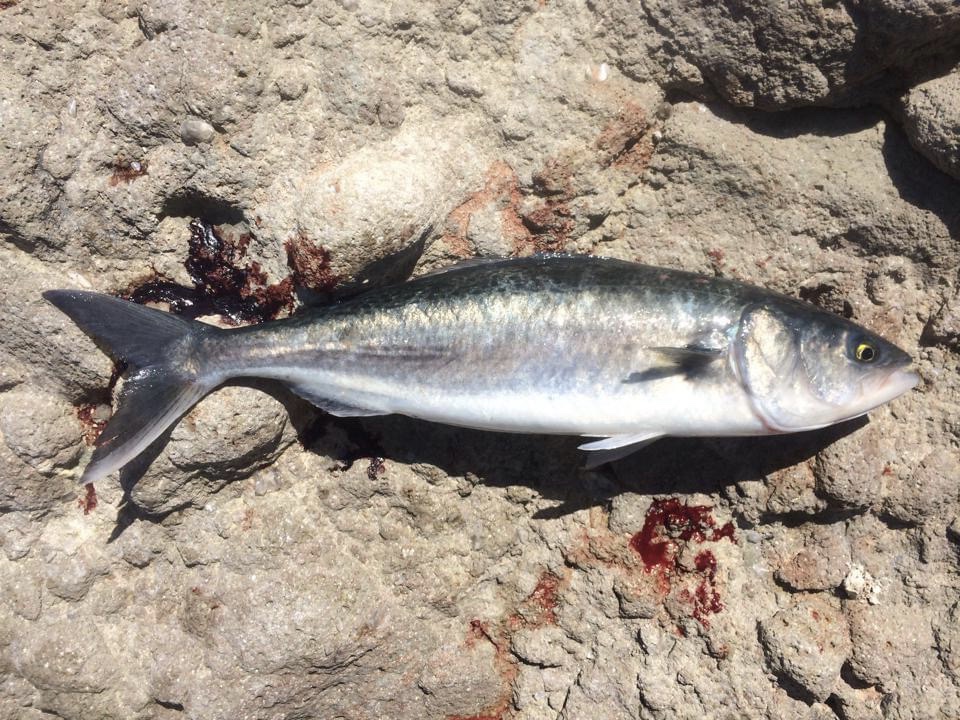Australian salmon
(Arripis trutta)

Image source: Jo's Animal Database
Classification
General data
Arripis trutta, known as kahawai in New Zealand and as the Australian salmon in Australia, is a South Pacific marine fish and one of the four extant species within the genus Arripis, native to the cooler waters around the southeastern Australian coasts and the New Zealand coastline. Other common names for this species include Eastern Australian salmon, bay trout, blackback salmon (or just black back), buck salmon (or buck), cocky salmon, colonial salmon, newfish and salmon trout.
Although it is referred to as salmon in Australian English and its species epithet trutta is Latin for trout, it is not related to true salmons or trouts, which belong to the family Salmonidae of the order Salmoniformes. All Arripis species belong to the family Arripidae of the order Scombriformes.
Arripis trutta is a streamlined fish with a long and slender body. There is a bony ridge edge of bone beneath and in front of each eye which has obvious serrations in smaller individuals. In larger fish the scales feel smooth. The lobes of the caudal fin are equivalent in length to the head. These fish are dark bluish-green dorsally and silvery white ventrally. The juveniles have golden bars on their upper flanks and these break up into large spots as the fish matures. The pectoral fin is vivid yellow and the caudal and spiny part of the dorsal fin both have a blackish margin.
There are 9 spines and 15–17 soft rays in the dorsal fin and 3 spines and 9–10 soft rays in the anal fin.
The maximum total length recorded is 89 centimetres (35 in) although they are commonly a total length of around 47 centimetres (19 in) and the maximum recorded weight is 9.4 kilograms (21 lb).
The most consistent difference between this species and Arripis truttacea is the gill raker count, A. truttacea has 25–31 gill rakers and A trutta has 33–40.
Arripis trutta can differentiated from Arripis xylabion, as the former has a larger tail.
Arripis trutta is found in the southwestern Pacific Ocean mostly around the littoral waters of the Tasman Sea and Bass Strait. In Australia, they are found from Moreton Bay in Queensland to western Victoria and northern Tasmania, with infrequent records at Kangaroo Island in South Australia. They are also found around Lord Howe Island and Norfolk Island in the open waters of the Tasman Sea. In New Zealand, they are distributed around the coasts but are more common north of Kaikoura on the South Island. They are also found around the Chatham Islands and Kermadec Islands east of New Zealand.












